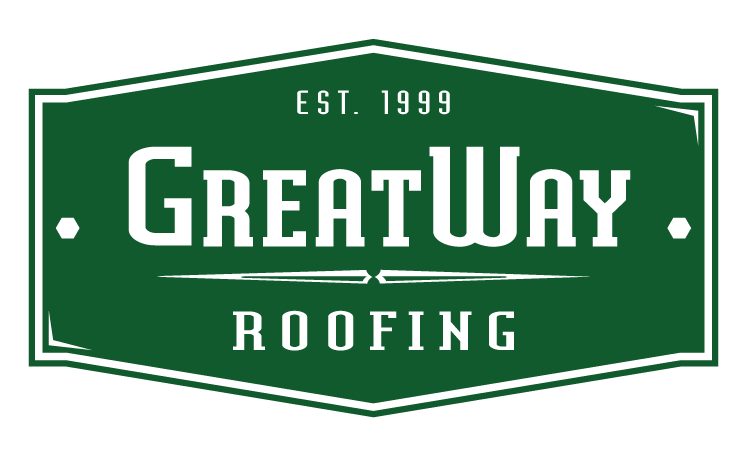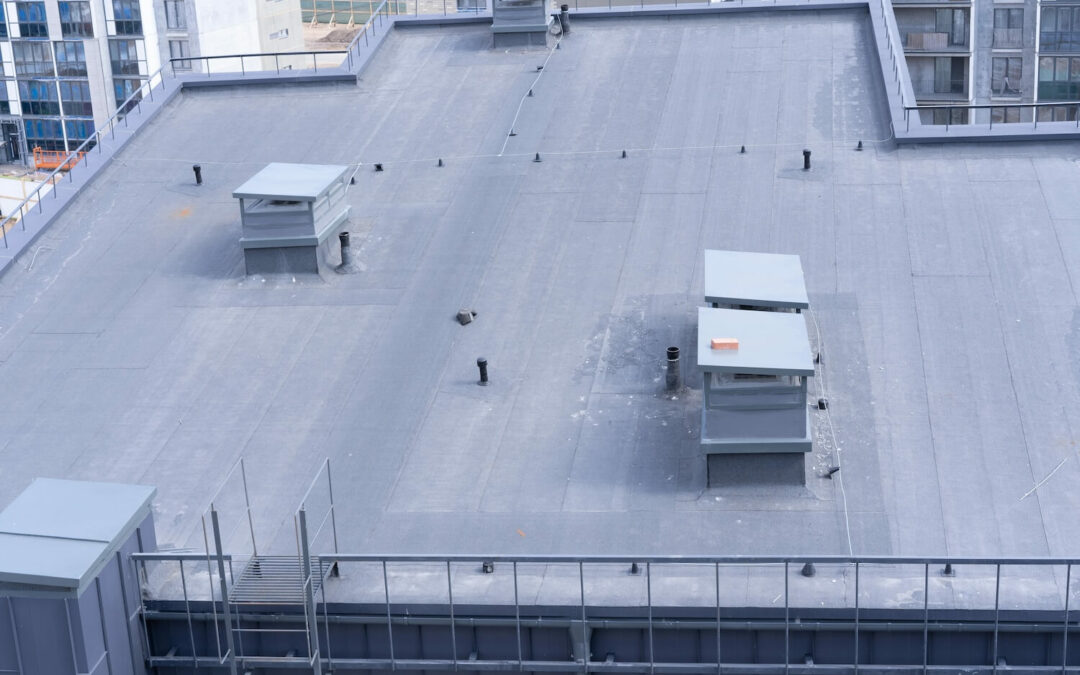In commercial real estate, the roof is more than just a protective covering; it’s a crucial component that affects the building’s performance, aesthetics, and overall value. Over time, even the most robust roofing systems can suffer from wear and tear, leading to leaks, decreased energy efficiency, and diminished curb appeal. This is where commercial re-roofing comes into play—a process that revitalizes your property and enhances its functionality and longevity.
This comprehensive guide explores the benefits of commercial re-roofing, the materials available, the re-roofing process, and the importance of hiring professional services.
Why Re-Roofing?
Enhancing Building Performance
A well-maintained roof is essential for the optimal performance of any commercial building. Over time, roofing systems can degrade, leading to various issues affecting the building’s interior environment and operational efficiency.
- Energy Efficiency: Older roofing systems may lack proper insulation and reflective properties, resulting in higher energy costs. Modern roofing materials, such as TPO and metal roofing, offer improved insulation and reflectivity, reducing the need for excessive heating and cooling.
- Weather Resistance: A new roof provides enhanced protection against the elements. Modern materials are designed to withstand severe weather conditions, including heavy rain, snow, and high winds, reducing the risk of leaks and structural damage.
- Indoor Comfort: A well-insulated and properly sealed roof provides a more comfortable indoor environment. It helps regulate indoor temperatures, preventing drafts and ensuring a consistent climate within the building.
Aesthetic Improvement
First impressions matter, and the appearance of your building’s roof plays a significant role in how your property is perceived. An aging or damaged roof can detract from the overall aesthetic appeal of your commercial space.
- Curb Appeal: A new roof can dramatically enhance your building’s visual appeal. Whether you opt for sleek metal roofing or stylish TPO, a fresh roof gives your property a modern and polished look.
- Brand Image: Maintaining a professional and attractive exterior is crucial for businesses’ brand image. A new roof can reflect positively on your business, helping to attract clients, customers, or tenants.
Increasing Property Value
Investing in a commercial re-roofing project can significantly increase the value of your property. When evaluating a property, potential buyers or tenants often consider the roof’s condition.
- Market Appeal: A new roof can make your property more appealing in the real estate market. It signals that the building is well-maintained and that significant upgrades have been made.
- Long-Term Investment: While re-roofing involves an upfront cost, it can lead to substantial long-term returns. A new, high-quality roof can increase the property’s overall value and make it a more attractive investment.
Cost Savings
Although the initial cost of re-roofing may seem high, it can result in significant cost savings over time.
- Reduced Maintenance Costs: A new roof reduces the need for frequent repairs and maintenance. You can expect fewer issues and lower repair costs with modern materials and technologies.
- Energy Savings: Energy-efficient roofing materials can lead to lower utility bills. You can reduce heating and cooling expenses by improving insulation and reducing heat transfer.
Choosing the Right Roofing Materials
Selecting the best roofing materials for your building is crucial for ensuring your re-roofing project meets your needs. Different materials offer various benefits, and the choice should align with your building’s usage, climate, and budget.
Popular Roofing Materials
- TPO (Thermoplastic Olefin)
- Overview: TPO roofing is a single-ply membrane that is highly reflective and resistant to UV rays, chemicals, and punctures.
- Benefits: It offers excellent energy efficiency, reducing cooling costs by reflecting sunlight. TPO is also known for its durability and ease of installation.
- Ideal For: Flat or low-slope roofs, especially in hot climates.
- EPDM (Ethylene Propylene Diene Monomer)
- Overview: EPDM is a type of synthetic rubber that is flexible and resistant to extreme weather conditions.
- Benefits: It has a long lifespan and is resistant to heat, cold, and UV radiation. EPDM is also relatively easy to maintain.
- Ideal For: Flat or low-slope roofs, particularly in areas with severe weather conditions.
- Metal Roofing
- Overview: Metal roofing includes materials like steel, aluminum, and copper, available in various styles such as standing seam and corrugated panels.
- Benefits: Metal roofs are known for their durability, longevity, and resistance to fire and severe weather. They also offer excellent energy efficiency.
- Ideal For: Buildings in areas with heavy snowfall or high winds, as well as those looking for a modern, sleek appearance.
- Built-Up Roofing (BUR)
- Overview: BUR systems consist of multiple layers of asphalt and reinforcing fabrics.
- Benefits: BUR provides excellent waterproofing and durability. It’s a tried-and-true option for flat roofs and offers good resistance to weather and impact.
- Ideal For: Flat or low-slope roofs, particularly in commercial buildings with a large surface area.
- Modified Bitumen
- Overview: Modified bitumen roofing combines asphalt with polymer additives to improve flexibility and durability.
- Benefits: It is easy to install and offers good performance in both hot and cold climates. Modified bitumen is resistant to weather and physical damage.
- Ideal For: Low-slope roofs, providing a balance between BUR and single-ply systems.
Factors to Consider
- Climate: Choose roofing materials based on the local climate. For example, TPO is ideal for hot climates, while metal roofing performs well in snowy areas.
- Building Usage: The function of your building affects material choice. Industrial warehouses may require different materials compared to office buildings or retail spaces.
- Budget: Consider both the initial cost and long-term benefits of roofing materials. Higher-quality materials may have a higher upfront cost but can offer better performance and longer lifespan.
The Re-Roofing Process
Understanding the re-roofing process helps in planning and managing the project effectively. Here’s an expanded look at the steps involved in commercial re-roofing:
1. Assessment and Planning
Before beginning the re-roofing project, a comprehensive assessment of the existing roof is essential. This includes:
- Inspection: A thorough inspection by a roofing professional to identify leaks, damage, or structural weaknesses.
- Evaluation: Assessing the condition of the underlying deck and any additional components such as insulation and ventilation.
- Planning: Develop a detailed plan that includes material recommendations, project timeline, and budget considerations.
2. Removing the Old Roof
The removal of the old roof involves:
- Stripping: Carefully remove the existing roofing materials to expose the underlying deck.
- Disposal: Properly disposing of old roofing materials in compliance with local regulations and recycling when possible.
- Inspection: Checking the deck for damage or rot that needs to be addressed before installing the new roof.
3. Repairing and Preparing the Deck
Preparing the deck involves:
- Repairs: Addressing any damage or structural issues with the deck. This may include replacing damaged sections or reinforcing weakened areas.
- Cleaning: Ensuring the deck is clean and free of debris, which can affect the adhesion of the new roofing materials.
- Preparation: Apply any necessary underlayment or insulation to prepare the surface for the new roofing system.
4. Installing the New Roof
The installation process includes:
- Underlayment: Laying down a protective underlayment to provide an additional layer of waterproofing.
- Primary Roofing Material: Installing the chosen roofing material according to manufacturer specifications and best practices.
- Sealing: Ensuring all seams, joints, and penetrations are properly sealed to prevent leaks and ensure durability.
- Finishing Touches: Installing additional components such as flashing, gutters, or ventilation systems.
5. Final Inspection and Cleanup
After the installation is complete:
- Inspection: Conducting a thorough final inspection to ensure the roof is installed correctly and free from defects.
- Testing: Check for leaks or other issues and address any concerns before finalizing the project.
- Cleanup: Remove all construction debris and ensure the site is left clean and safe.
Benefits of Hiring Professional Roofing Contractors
While DIY re-roofing might seem tempting, hiring professional roofing contractors offers numerous advantages:
1. Expertise and Experience
Professional contractors bring:
- Knowledge: Expertise in various roofing materials, installation techniques, and building codes.
- Experience: Years of experience handling different types of roofing projects and solving complex issues.
2. Quality Workmanship
Professionals ensure:
- High Standards: Adherence to industry standards and best practices for roofing installation.
- Warranties: Many professional installations come with warranties, providing peace of mind and protection against potential issues.
3. Efficiency and Timeliness
Hiring professionals ensures:
- Efficiency: Projects are completed promptly, minimizing disruption to your business operations.
- Project Management: Effective project management from start to finish, including coordinating with other contractors or trades as needed.
4. Safety
Safety is paramount:
- Training: Professionals are trained in safety protocols and use appropriate safety equipment to prevent accidents.
- Compliance: Ensuring compliance with local building codes and regulations to avoid legal issues or penalties.
5. Cost-Effectiveness
Investing in professional services:
- Long-Term Savings: Reduces the need for frequent repairs and maintenance, leading to long-term cost savings.
- Avoiding Mistakes: Prevents costly mistakes that can arise from DIY attempts, ensuring a high-quality installation.
Conclusion
Re-roofing a commercial building is more than just a cosmetic upgrade; it’s a strategic investment that can transform your property’s performance, appearance, and value. By addressing issues such as energy inefficiency, weather resistance, and aesthetic appeal, a new roof enhances the functionality and longevity of your building.
Choosing the appropriate roofing materials, understanding the re-roofing process, and hiring professional contractors are all critical steps in ensuring the success of your project. Commercial re-roofing is a worthwhile investment for any property owner with improved performance, increased property value, and long-term cost savings.
Transform your building from drab to fab with a commercial re-roofing project that delivers lasting benefits. Whether you’re dealing with an aging roof, seeking to upgrade to modern materials, or enhancing your property’s overall appeal, a well-executed re-roofing project can make a significant difference.

